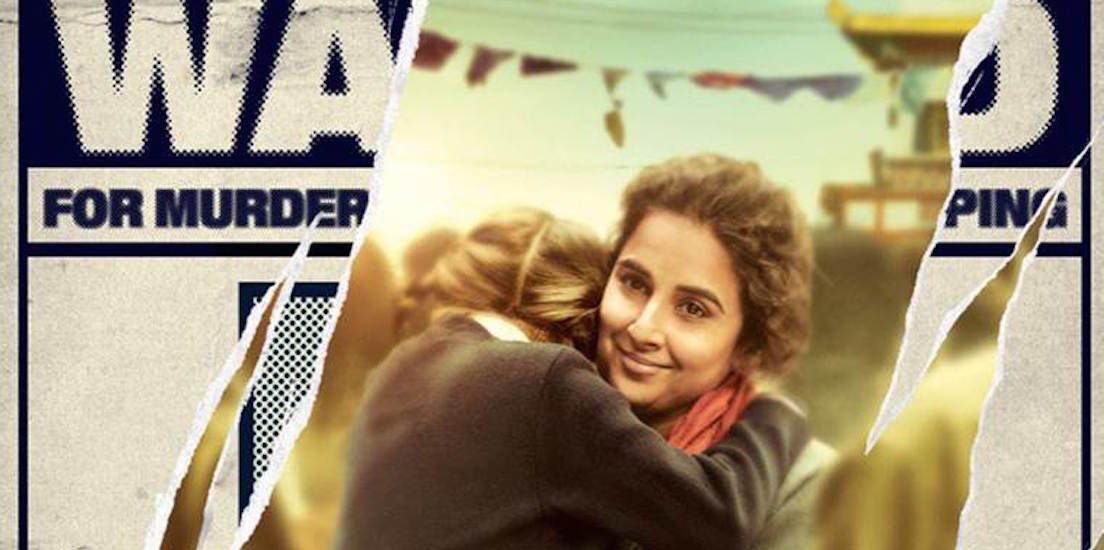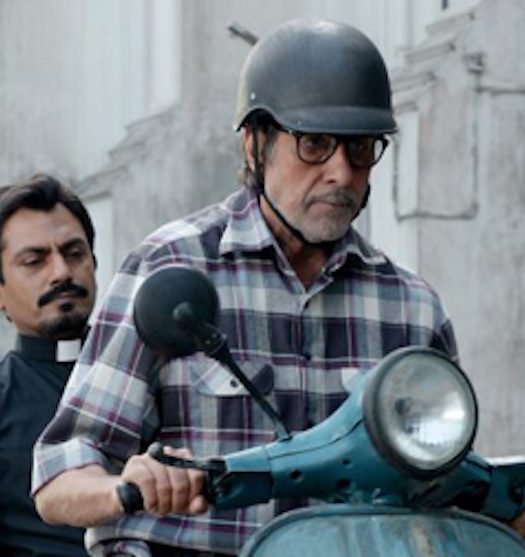Production Posts – Kahaani 2
Sujoy Ghosh redefined thrillers with Kahaani back in 2012. Now with Kahaani 2, he is back with the spine-chilling story of Durga Rani Singh. For any film to be successful there are two extremely important aspects that cannot be overlooked – the story and the music. Both these aspects were spot on in the first film and Kahaani 2 seems to be following in the same footsteps.
We caught up with writer Suresh Nair and music composer Clinton Cerejo, who were also associated with Kahaani, to know all that went into the making of this sequel. They talk about their approach towards the new film, their equation with the director, the emerging trend of sequels and more.

Suresh Nair
How was the idea for Kahaani 2 conceived? Was a sequel always in the plan?
There was always a desire to make another Kahaani; you have this temptation as well as the pressure or demand to make a sequel. We had started the idea of taking the franchise forward several times. There was also the fact that topping the story and climax of the first film was going to be really difficult. To get that kind of high in the end, to have that kind of a story, is a difficult task. We had ideas and Sujoy (Ghosh) and I were looking at other stories as well. We did a lot of research and finally a script emerged and the character of Durga Rani Singh was developed. I can’t say that it is fully based on a real incident, but it is triggered by some real events that we came across.
READ: THERE IS NOT A SINGLE FILM I REGRET DOING IN MY CAREER – VIDYA BALAN
How pressurizing it is to make a sequel to a path-breaking film like Kahaani? Are there any common points between the two films?
There was pressure and that is why we wanted a different story. The moment we put the title as Kahaani 2 people started over-expecting because they have seen the first film and they expect something very similar, which this movie is not.
There is nothing similar between the two movies besides Vidya Balan and some of the cast and crew. The other similarity is that both the movies were shot in and around Kolkata. Other than that the whole story is different. This is a slightly darker and disturbing film, but done in a thriller format.
Sequels already have an existing audience
How difficult was it to develop the character of Durga Rani Singh? What challenges did you encounter?
We always began with Vidya (Balan) in our mind. And the moment you have somebody like her, writing the character becomes more interesting because you know what she can do with it. You can push the character to any length and level and you know that she can deliver as an actress. The character demanded a varied amount of emotions and it had its own physicality. The way Vidya approaches the whole character is brilliant. In the entire film Vidya looks so deglamorized, she is bloodied and bruised and emotional. She is not the Vidya you see, it was a physically challenging role for her.
You have worked with Sujoy Ghosh for a long time now, how would you describe your equation as co-writers?
Between us, we are more like friends than anything else. We have worked together since our first film, Jhankaar Beats. I was a journalist and was never into films. Sujoy pushed me to come on board Jhankaar Beats. At that time, I didn’t even take him seriously as a director, but then I saw the first cut of the film and I was blown away by what Sujoy had done with it.
With him, I’ve never felt like I am working, it always feels like two friends jamming together. We would sit, chat and discuss, write, that is how it has always been. No matter which part of the world we are in, we are constantly in touch discussing ideas. This happened while writing Kahaani 2 as well, we were in different places, but still discussing and researching for the movie. Once we have the whole idea, we just take off to a place and write.
When you have somebody like Vidya Balan, writing the character becomes more interesting
This year has seen a lot of sequels. What is it about this trend that works? As a writer does it make things easier or tougher while working on a sequel?
I think it is nothing new, even though in India we have discovered this marketing tool recently, but Hollywood has had sequels all along. I remember the sequels for The Godfather and Rocky, so the concept was always there. Sequels already have an existing audience, for instance, a lot of people will watch Kahaani 2 largely because they liked the first film.
READ: TAKE 2 – IT’S RAINING SEQUELS IN BOLLYWOOD

Clinton Cerejo
Is the music from the first film carried forward to the second? Is there a connecting point and what has changed in Kahaani 2?
It is a completely different story, so even musically, we decided to treat it differently. Essentially, both the films are thrillers so I have tried to keep the pace of the film and build up tension as per the demand of the script. The songs are situational and they actually come as a bit of relief in the film because otherwise the story and background music is relentless. The story keeps moving forward, but the songs come at strategic points. The songs are meant to give a little respite to the audience and then get back into the film.
READ: A MUSIC COMPOSER SHOULD KNOW HOW TO DRESS A SONG – TANISHK BAGCHI
Does is it get comparatively easy to work on a sequel or is it more challenging?
This was not a sequel in terms of story as it wasn’t connected to the first film but in a sense that the franchise of Kahaani has been taken forward. We did play with the idea of taking some of the music from the first film. I did some experiments also where I took a couple of scores from the first Kahaani, but somehow it didn’t really work because the texture and tonality of the the two films is different. There was more emotional quotient to this film because of the subject matter. From that perspective the challenge was to up the emotional quotient while trying to keep the pace in mind.
The songs are meant to give a little respite to the audience and then get back into the film
What was Sujoy Ghosh’s brief for the music and what was your approach towards it?
Sujoy used the first Kahaani as a reference in terms of the quality of the music. But at the same time I knew that this is a standalone film, so I did not want to take the listener back to the first film. That can be good at times, but not necessarily always. The music of the film was something that had to be treated with caution. I tried to let the scene speak to me and decided the score on the basis of the requirements of the scene.
How easy or difficult is it to create music for a thriller? Are there certain aspects that you need to concentrate on?
Working with a director like Sujoy who is so focused and knows what he wants really helps. The film moves quickly and that is something which the music has to reflect. I also had to keep in mind that one can’t keep using the same old thing as it will become boring for the listener. You have to find that balance by creating music that matches the pace, but at the same time creating a diversified palette within that mix so that the listener is engaged.
The music of the film was something that had to be treated with caution
Taking Kahaani 2 as an example, how does the music of the film reflect the story?
If you look at the last song, ‘Anandoloke’, which is Rabindra Sangeet and is about resolution in the end. As far as the song and score of the film is concerned, we tried to highlight one aspect in each of the songs. Either it was the fun loving relationship between the mother-daughter or it was the triumph at the end or even just how synonymous Rabindra Sangeet is with Kolkata. When you think of the film in the context of the sound track, it should transport the listener to the place where the film is based, which is what we have tried to do with the score.



